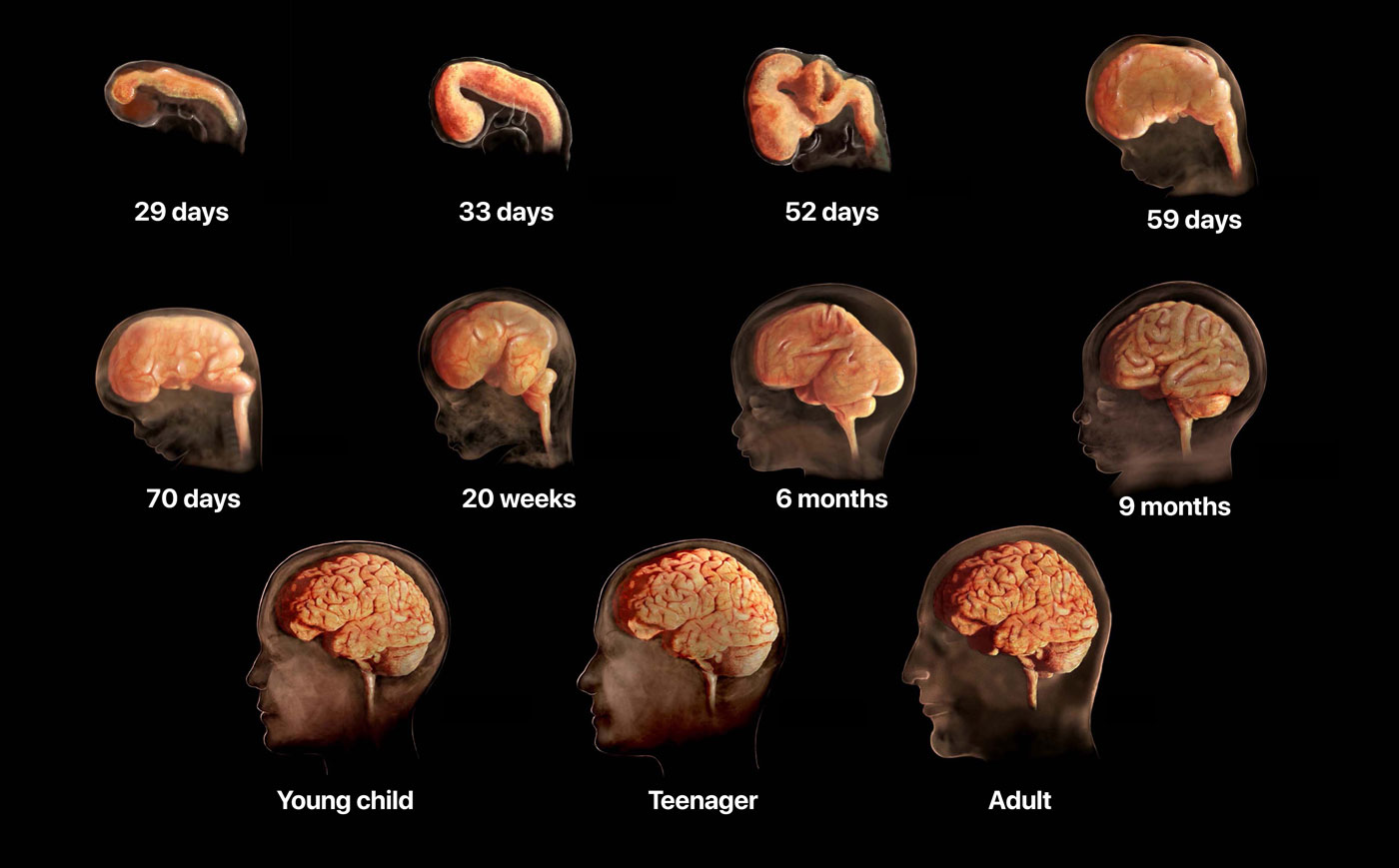Prenatal sensory experience enhances the survival of neurons involved in sensory brain circuits. In adults, sensory information enters from the eyes, ears, skin, or mouth, then goes to a relay center in the brain called the thalamus and ends in the cortex at layer 4, the layer designed to receive sensory information. Before the cortex fully matures, it grows from an area called the subplate. Neurons destined for the cortex first move into the subplate, where they wait until the cortex is sufficiently mature. In humans, the subplate forms between 12 and 17 weeks, and synapses from other brain regions enter this structure right away.10 Then the subplate neurons migrate into their mature cortical positions while keeping their synaptic connections. The subplate disappears by 6 months after birth.11
In animals, sensory information from the thalamus connects to neurons in the subplate before the sensation-receiving layer of the cortex has developed. Importantly, these connections into the subplate are organized just the way the mature cortex is organized, and function similarly as well. For instance, in brain regions that process sound, pitches of similar frequency are located adjacently in the cortex. When sounds are played to unborn animals, neurons in the subplate show frequency-organized activation as well.12 Some of the same neurons that processed sensory information in the subplate are preserved into adulthood.13 Since all of the sensory systems follow a similar pathway of development, this suggests that thalamic connections to neurons that process touch and pain in the subplate would also be active when the subplate forms.14










